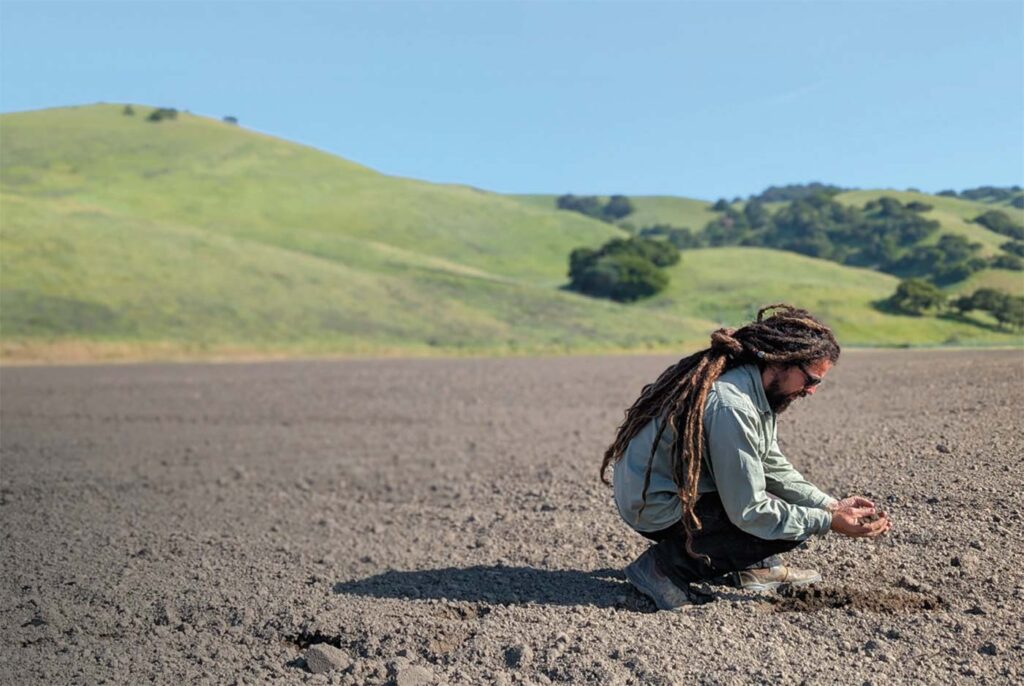
PHOTOGRPAHY BY MARK C. ANDERSON
Native grasses leap from rolling hills that glow green in spring and turn gold by summer. Small clumps of ancient oaks with gnarled branches cast dramatic silhouettes from above a soft expanse of rich farm dirt.
The air carries a hint of the Pacific, and the land sprouts wildflowers like yellow mustard, rose clover, purple vetch and three types of lupine. This pastoral 866-acre property where Highway 68 meets River Road in Salinas, long known as Ferrini Ranch, bursts with classic Central Coast scenery.
And, after many iterations—from wild untouched land to an 1800s cattle ranch to a decades-long battleground for conservation and development forces—it now bursts with potential impacts well beyond this part of The Golden State.
In late 2024, conservation finally won.
After years of hopeful discussions and planning, two local conservation powerhouses teamed up to take over management of the land. Trust for Public Land purchased the entirety of Ferrini Ranch, with support from Community Foundation Santa Cruz County’s Strike Fund, with the intention of eventually transferring ownership to Big Sur Land Trust (BSLT) once funding is secured.
One of BSLT’s first steps was to tap a new organization called Regenerative California to take over a 68-acre parcel on the ranch.
The vision is to build a farm that grows food and flowers, hosts workshops and shares land with organic farmers, and furnishes a model for agriculture that feeds people, supports workers and revitalizes the land.
Plastic- and fertilizer-intensive strawberry plots have been healed with steady attention from Regenerative California’s lead farmer, TJ Silva, who also manages farming operations at Earthbound Farm.
Silva and his team are planning where they’ll plant zinnias, sunflowers and dahlias to attract pollinators, while vegetables like Swiss chard, beets, winter squash and green beans will line rows interspersed with thyme, parsley and other herbs.
Over time, perennials and fruit trees will root down and become fixtures too.
“We believe farms should heal the land, water, air and the community,” he says. “Beauty is essential and this location has so much beauty already surrounding it.”
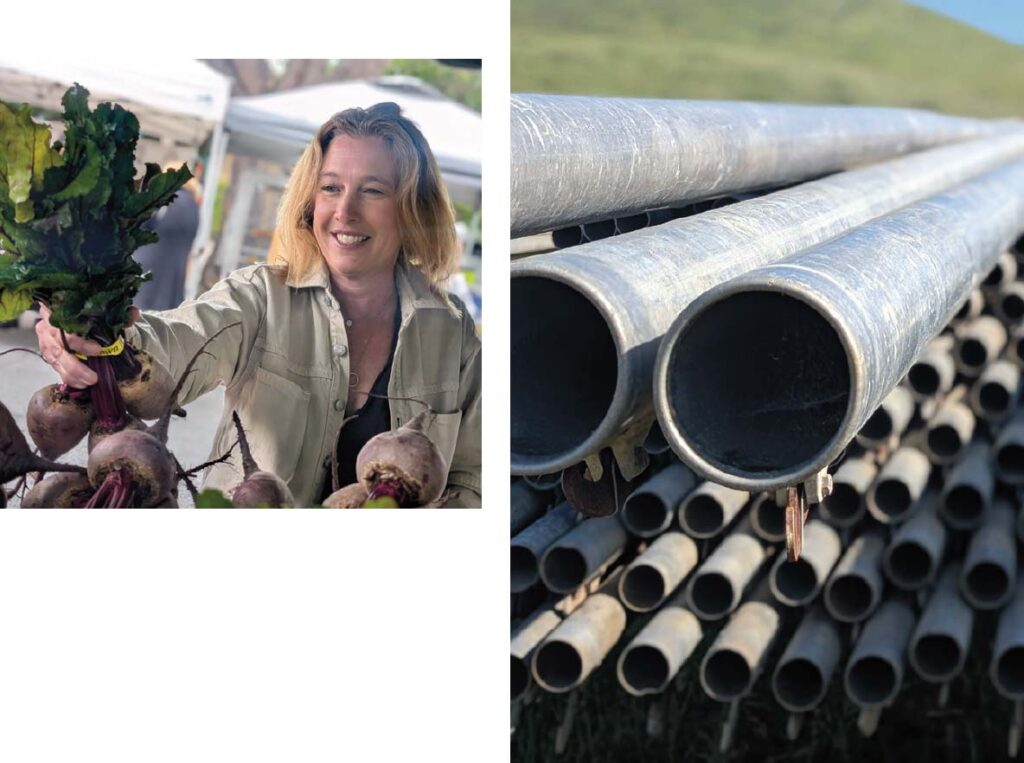
SHARING THE LAND
The ranch has long been a significant property. That’s due to its size (which totals roughly 656 football fields), its unique location (situated amid farmland connecting two cities) and stunning natural spaces (framed by the Sierra de Salinas range). The property also borders Fort Ord National Monument and Toro Park, representing the final link in a massive plot of protected land. It is home to species like bobcats, mountain lions, foxes, American badgers and the Monterey dusky-footed woodrat, serving as a wildlife corridor used by hundreds of animals a year.
When its previous landowners proposed plans to build luxury homes in the 1970s, local environmental groups successfully blocked them, citing the wildlife, strained water resources and wildfire risk. BSLT President and CEO Jeannette Tuitele-Lewis notes this plot is part of the Trust’s broader preservation efforts in the zone, which stretch across nearly two decades and 10,000 surrounding acres. She sees the Regenerative California farm as a prime example of how conservation projects can benefit the environment and community alike.
“Ferrini Ranch is an opportunity to look at how we combine regenerative agriculture with protection of a critical wildlife habitat within a scenic recreational and parklands corridor,” she says.
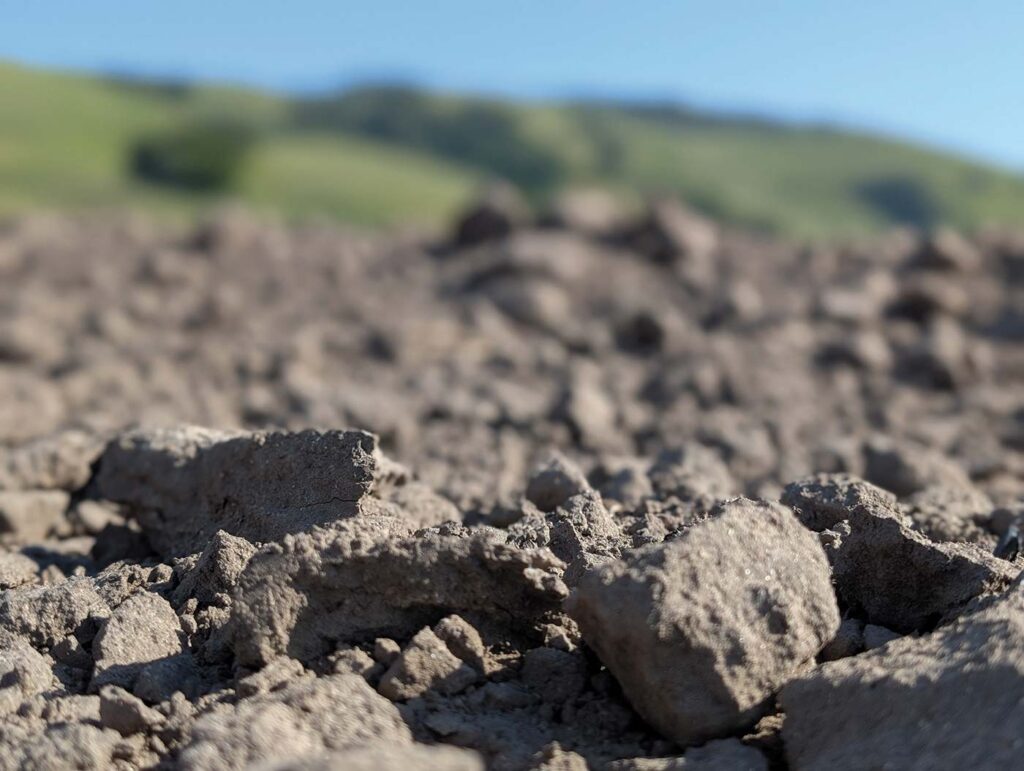
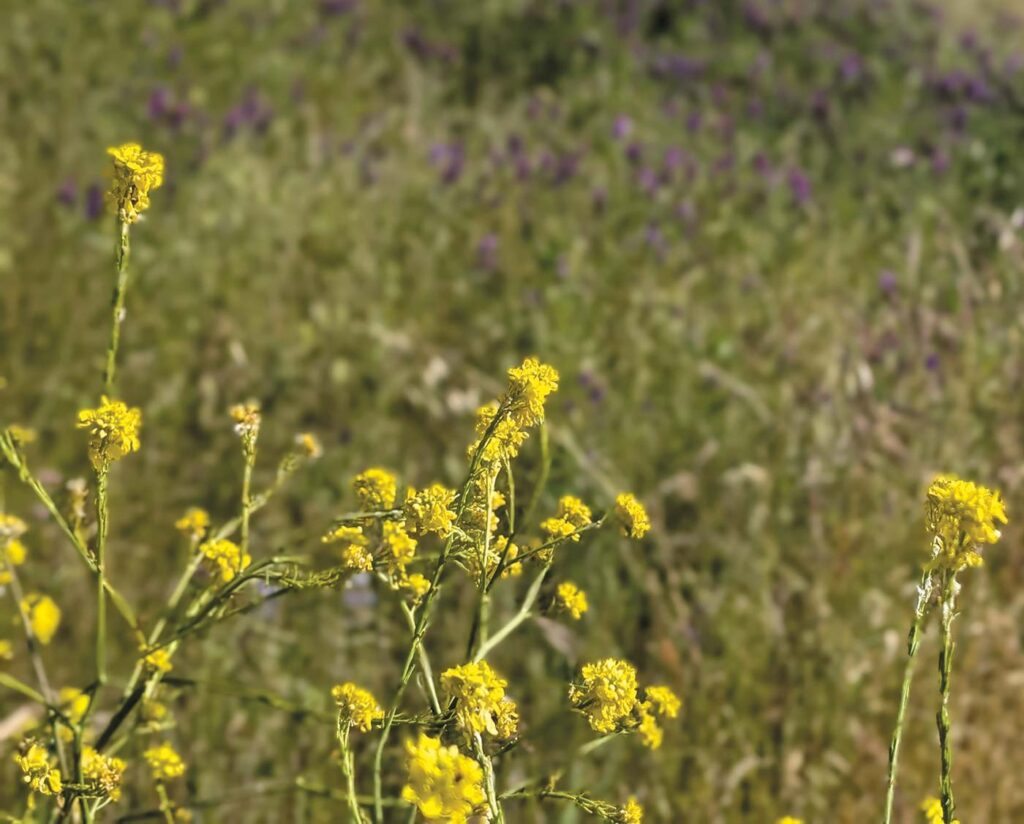
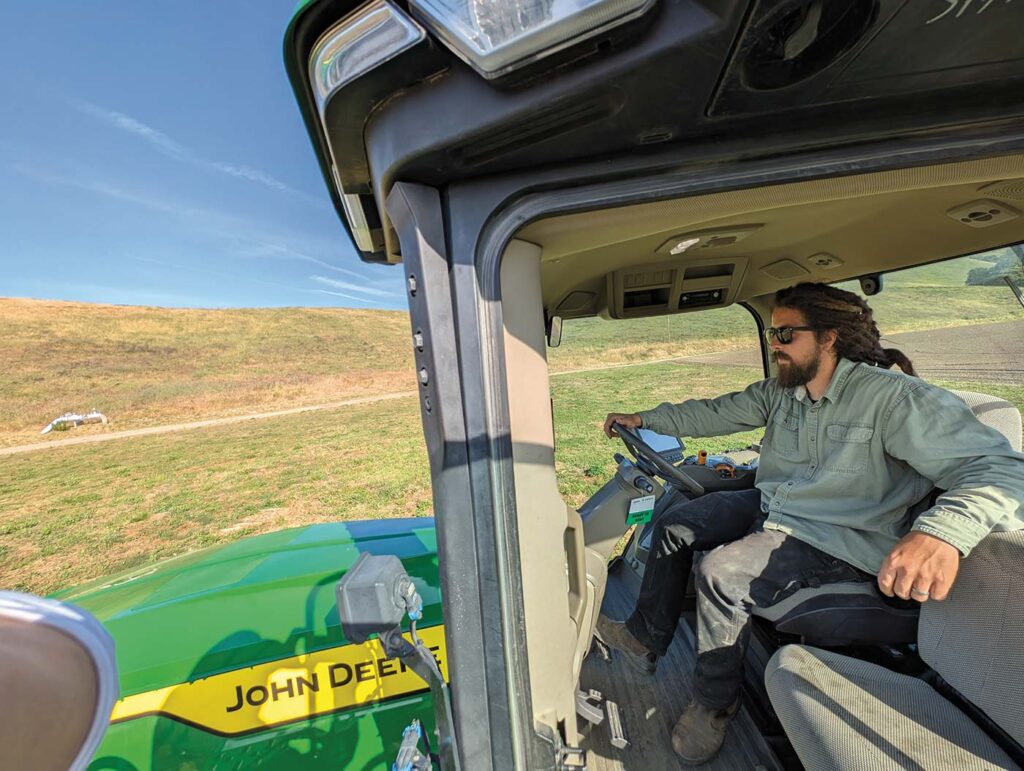
TENDING THE SOIL
United by complementary missions and shared landscapes, Regenerative California and BSLT have been connected since 2023, when the former’s CEO and co-founder, Kristin Coates, first launched the nonprofit.
The organizations have collaborated on various research and projects, and Tuitele-Lewis is an adviser to Regenerative California. Early on, Coates mentioned to Tuitele-Lewis that if BSLT ever acquired a property like Ferrini Ranch, it could be the perfect place for Regenerative California’s inaugural farming project—and what seemed like a lofty wish soon became a concrete plan.
“Land conservation organizations are typically known to put velvet rope around a piece of land,” Coates says. “But Big Sur Land Trust understands that humans are part of the ecosystem too. So we’re learning the role of agriculture in that ecosystem to provide a healthy, stable regional food supply.”
Since securing the land, things are moving fast for the yet-unnamed demonstration farm—which inspires a community invite to propose names for their new farm (see below).
In addition to tending the soil, Regenerative California also will make the farm accessible to other growers in the region.
Local farmers will have a chance to lease land, starting with a handful of graduates of the Salinas-based Agriculture and Land-Based Training Association (ALBA), a nonprofit dedicated to creating great produce and economic opportunities for aspiring organic farmers, particularly those from limited-resource backgrounds.
“If we want to move towards a regenerative economy, we have to show what it looks like.”
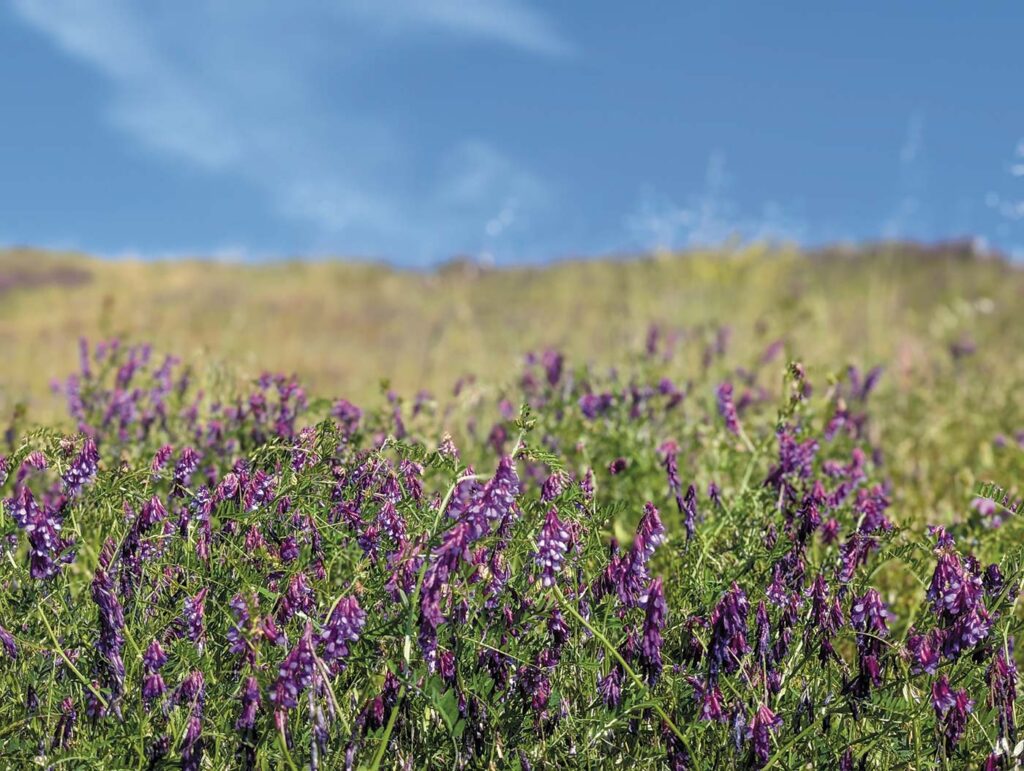
RAISING THE DREAM
Beyond growing food, this will be a place to test big ideas. Educational events and workshops will pass on techniques for maximizing organic vitality, from cover cropping and pollinator programs to worm tending and making compost tea.
The team will also showcase innovative approaches, like finding ways to increase the food’s nutrient content, a passion project of Jamie Collins, Regenerative California’s farm programs and engagement manager (who also is a regular contributor to Edible Monterey Bay).
“As regenerative practices are put in place and we’re rebuilding soil health and all that, we can actually analyze the food and see that the nutritional value is higher,” she says. “That [nutritional value is] being depleted because of conventional farming and erosion of topsoils… We’re not getting the food we did back in the day.”
Collins is also preparing to host events like seasonal crop celebrations for staples like strawberries and tomatoes, showcasing their histories and innumerable varieties. She envisions inviting local chefs to lead classes like salsa- or Bloody Mary-making workshops during peak tomato season.
The farm also has its sights set on confronting bigger issues in agriculture. Land access and land tenure are at the top of the list.
Many small to midsize farmers are only offered short-term leases, which leads to them growing more high-yield annuals. Over time, that high-intensity growing can deplete soil nutrients and make it difficult for anyone to grow anything, which inspires Regenerative California to pilot long-term subleases to their farmers.
“It starts with an access issue,” Coates says, “but it actually has this sort of cascading effect on the ecological, economic and social aspects.”
Another challenge in Regenerative California’s sights is the supply chain. Regenerative California is partnering with Rancho Cielo to build a farm stand right on the property, visible from adjoining River Road. This will allow growers to sell their products directly to community members, while retaining 100% of the profits. The organization is also working with local restaurants, retailers and institutions to supply food directly, and planning crops based on partner requests.
Come fall, places like Sierra Mar at Post Ranch Inn, Aubergine in Carmel and the Monterey Peninsula Unified School District will be serving produce grown on the farm.
“One small farm is not going to change the system, but we need signals that show how [growing food] can be done differently,” Coates says. Though the team only recently broke ground, Regenerative California’s project is earning attention. They are fielding queries from ag tech companies, biological growing suppliers and other organizations that want to test products on the farm.
Their work is even featured alongside environmental pioneers like Patagonia and Guayakí Yerba Mate via a new book, Regenerative Economics, which highlights notable changemakers around the world.
“We live in a moment of time of a lot of talk,” Coates says. “If we want to move towards a regenerative economy, we have to show what it looks like, not just talk about what it looks like.”
NO “I” IN “FARM”
The regenerative farm project is a collaboration.
So is naming it, with your help.
Readers are invited to submit fun, creative and heartfelt suggestions to info@regenerativecalifornia. org; if your farm name is chosen, you will receive one of the first harvest boxes of farm produce, and 10 boxes will be donated in your name as a humble thank you.
The winning submission will also be recognized in a future publication of Edible Monterey Bay.
As Regenerative California CEO Kristin Coates notes, working together is foundational to their endeavor.
“We have to acknowledge the fact that we don’t operate in silos,” she says. “It’s not just the land production of food, it’s not just the ocean production of food, it’s not just housing being an issue. They’re all inter-related. And all of these have an impact on the ecological, social and economic prosperity, and the health and resilience of this community.”
About the author
Ashley Drew Owen is a writer and Massachusetts transplant. Her passion for learning about local food is only overshadowed by her passion for writing about or eating it. Safe to say, she is a lover of food and words, and also driving very fast in the left lane.
- Ashley Drew Owenhttps://www.ediblemontereybay.com/author/ashleyowen/
- Ashley Drew Owenhttps://www.ediblemontereybay.com/author/ashleyowen/
- Ashley Drew Owenhttps://www.ediblemontereybay.com/author/ashleyowen/
- Ashley Drew Owenhttps://www.ediblemontereybay.com/author/ashleyowen/


